

Clive Engine House
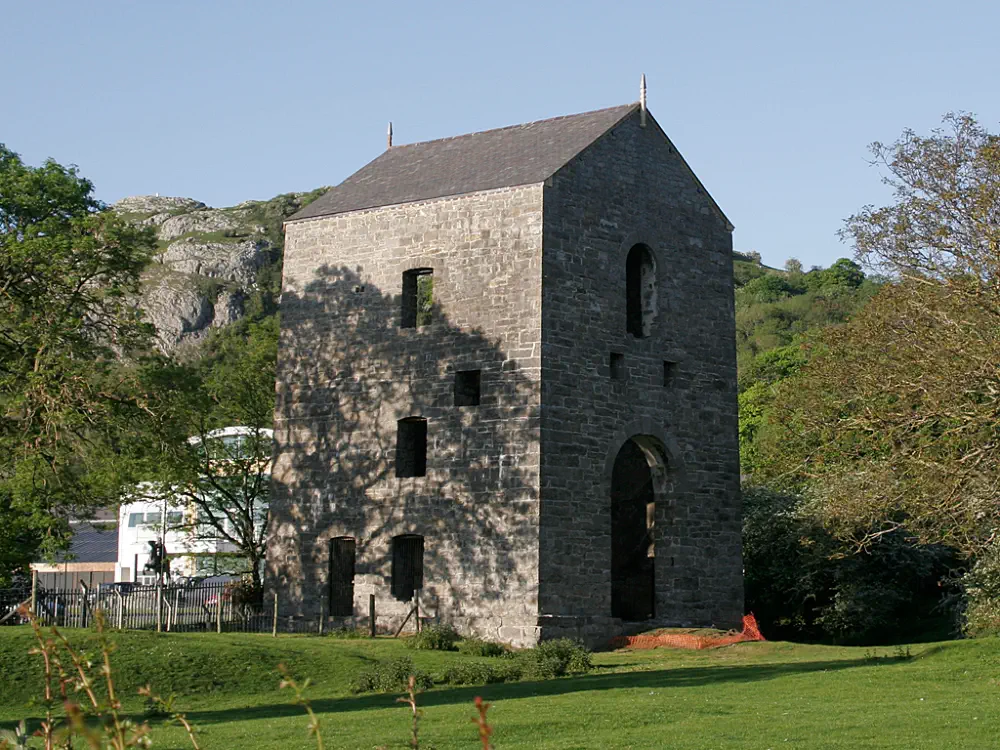
The Clive Engine House after restoration works in 2012, Graig Fawr and Marian Resort & Spa in the background
In the 1800s the mines spent huge amounts of money on pumping engines to keep the lower workings free of water.
The Clive Shaft was sunk between 1842 & 1845 and ceased operating in 1883. It was originally equipped with a 50-
inch (cylinder diameter) hydraulic pumping engine, constructed at John Taylor’s foundry in Rhydymwyn and installed in
an engine house underground.
The water to power the engine was conveyed by a new leat (watercourse) constructed in 1844. See The Leats. This
was fed by the River Ffyddion about a mile east of Dyserth.The final stage of the watercourse was an aqueduct of cast
iron pipes which took water to the engine from a small reservoir.
In 1862 the hydraulic engine was replaced by a steam engine with a 100 inch diameter cylinder. The beam, which
projected from the building, weighed 85 tons and had a stroke of 10 ft. The engine was built for £15,000 by the Haigh
Foundry in Wigan and housed in a new engine house built in 1860 near to the shaft - the Clive Engine House.
Clean water for the boilers was supplied by a wooden aqueduct (shown on the Ordnance Survey 25-inch map of
1871), which ran easterly about 700ft to the leat. Coal for the boilers came from Point of Ayr Colliery.
There were 7 “egg-end” boilers, 40ft long and 5 ft 6 inches in diameter in an adjacent boiler house which also powered
a horizontal steam engine for winding at another shaft.
The engine was in operation until the mine closed in April 1884. The engine was sold in 1885 to Westminster Colliery,
Gwersyllt, near Wrexham, where it was re-erected. It remained there until it was broken up and scrapped in 1925.


These diagrams, taken from a Perran Foundry catalogue
of 1870, show a Cornish Pumping Engine of similar
design to the one in the Clive Engine House
In 2012 conservation work took place on the Engine House, funded by grant aid from WREN (Waste
Recycling Environmental) and CADW.
Repairs to the roof, interior plasterwork, lintels and stonework area were carried out by Recclesia,
coordinated by Donald Insalls and Denbighshire County Council.
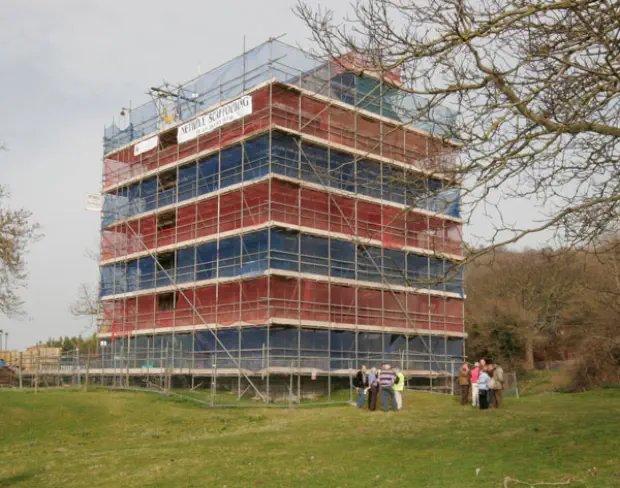
March 2012

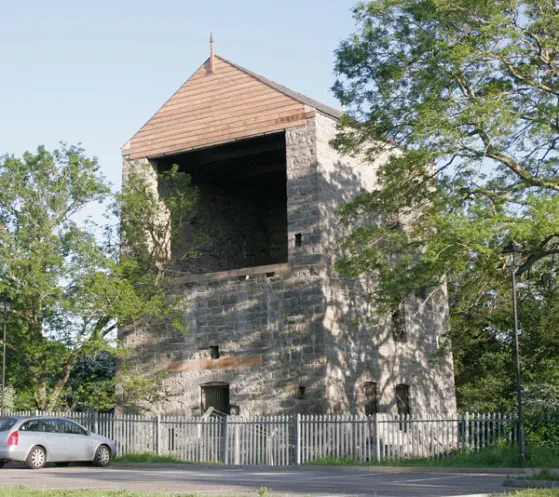
May 2012 from Dyserth Falls Resort car park (now called Marian Resort & Spa)
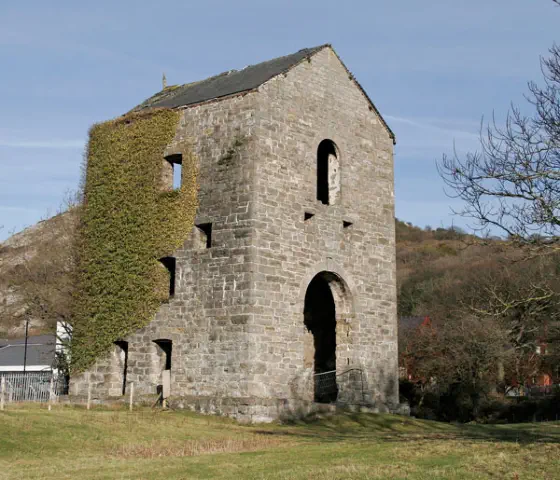

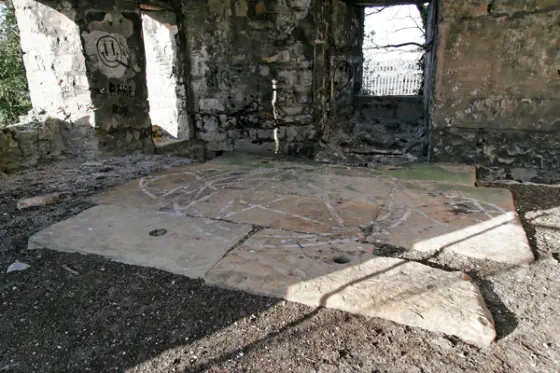



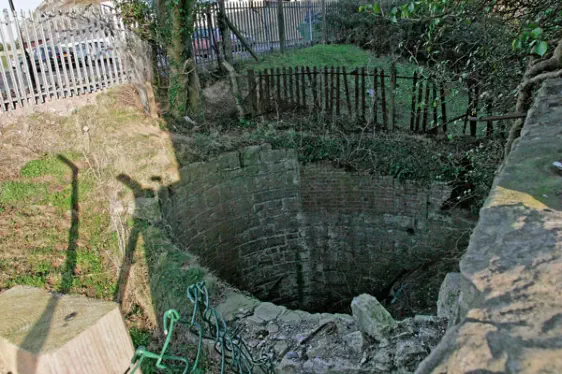
Some photos of the engine house taken in February 2006, with the kind permission of Mr Arthur Roberts - who sadly died soon afterwards.
The shaft behind the engine house (the
side nearest the Marian Resort & Spa
also taken 10
th
February 2006
All photographs Copyright © Peter J Robinson. All rights reserved
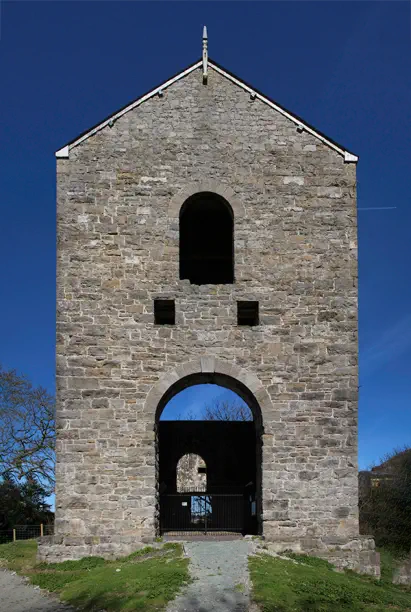
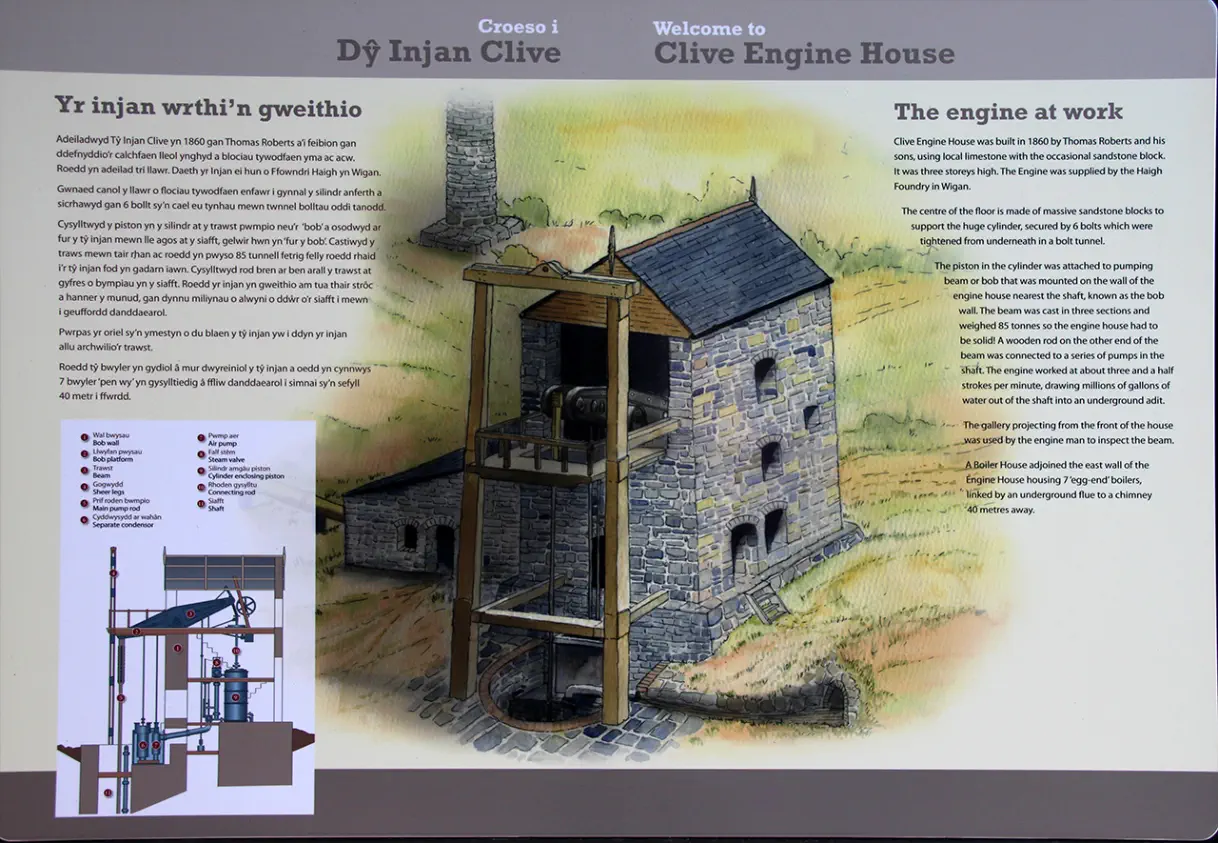
Display panel at the Engine House, March 2017
March 2017

Clive Engine House
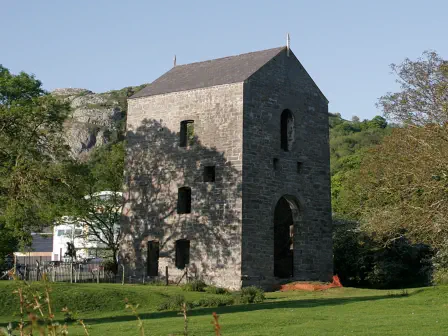
The Clive Engine House after restoration works in 2012, Graig
Fawr and Marian Resort & Spa in the background
In the 1800s the mines spent huge amounts of money on pumping
engines to keep the lower workings free of water.
The Clive Shaft was sunk between 1842 & 1845 and ceased operating
in 1883. It was originally equipped with a 50-inch (cylinder diameter)
hydraulic pumping engine, constructed at John Taylor’s foundry in
Rhydymwyn and installed in an engine house underground.
The water to power the engine was conveyed by a new leat
(watercourse) constructed in 1844. See The Leats. This was fed by
the River Ffyddion about a mile east of Dyserth.The final stage of the
watercourse was an aqueduct of cast iron pipes which took water to
the engine from a small reservoir.
In 1862 the hydraulic engine was replaced by a steam engine with a
100 inch diameter cylinder. The beam, which projected from the
building, weighed 85 tons and had a stroke of 10 ft. The engine was
built for £15,000 by the Haigh Foundry in Wigan and housed in a new
engine house built in 1860 near to the shaft - the Clive Engine
House.
Clean water for the boilers was supplied by a wooden aqueduct
(shown on the Ordnance Survey 25-inch map of 1871), which ran
easterly about 700ft to the leat. Coal for the boilers came from Point of
Ayr Colliery.
There were 7 “egg-end” boilers, 40ft long and 5 ft 6 inches in diameter
in an adjacent boiler house which also powered a horizontal steam
engine for winding at another shaft.
The engine was in operation until the mine closed in April 1884. The
engine was sold in 1885 to Westminster Colliery, Gwersyllt, near
Wrexham, where it was re-erected. It remained there until it was
broken up and scrapped in 1925.
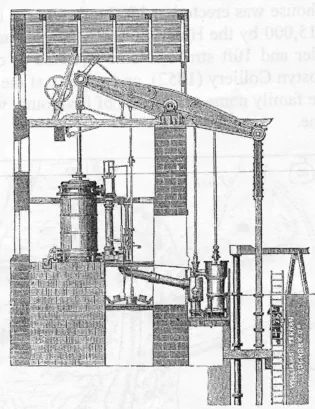

These diagrams, taken from a Perran Foundry
catalogue of 1870, show a Cornish Pumping
Engine of similar design to the one in the Clive
Engine House
In 2012 conservation work took place on the
Engine House, funded by grant aid from WREN
(Waste Recycling Environmental) and CADW.
Repairs to the roof, interior plasterwork, lintels
and stonework area were carried out by
Recclesia, coordinated by Donald Insalls and
Denbighshire County Council.

March 2012
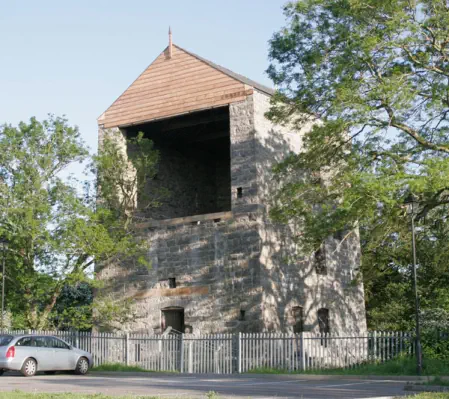
May 2012 from Dyserth Falls Resort car park (now called Marian Resort & Spa)
Some photos of the engine house taken in February 2006,
with the kind permission of Mr Arthur Roberts - who sadly
died soon afterwards.

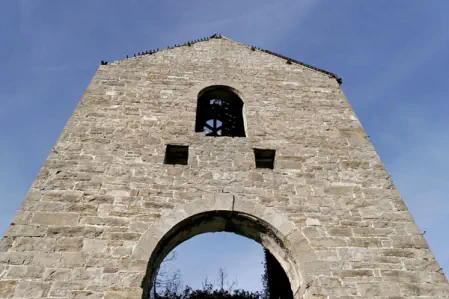
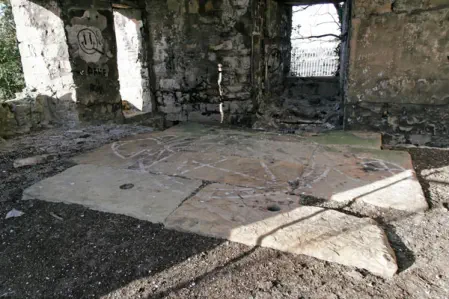
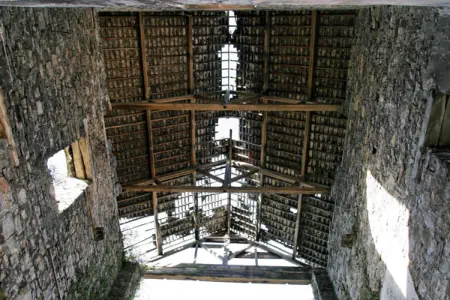

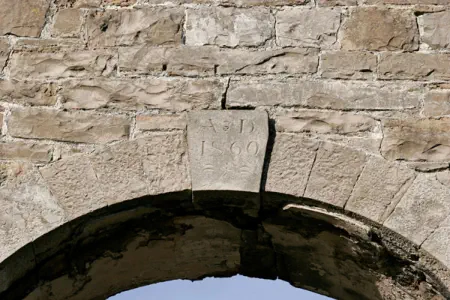

The shaft behind the engine house (the side nearest the
Marian Resort & Spa also taken 10
th
February 2006
All photographs Copyright © Peter J Robinson.
All rights reserved
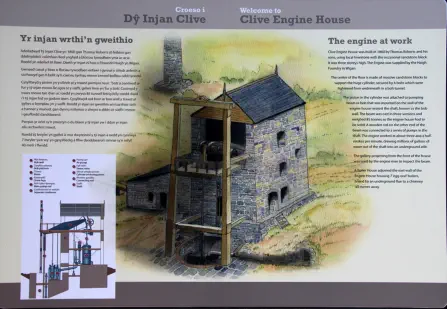
Display panel at the Engine House, March 2017
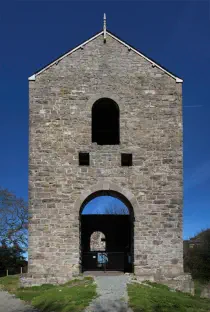
March 2017

























































































































































